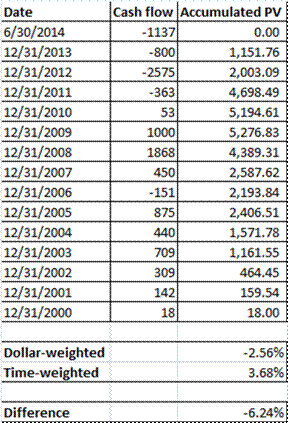Stock Valuations: Micro and Macro

From a friend who is a client:
Here are a couple of things I have been pondering.
- Market capitalization is pretty fictitious. It assumes that all the shares of a company are worth the price at which the last block sold. However, if you tried to sell all of the shares of a large company (hypothetically), the price would drop to almost zero.
- It seems to me the primary reason the stock market goes up over time is because the money supply increases. To put it another way, if the money supply did not increase the stock market could only increase in value by increasing the % percentage of the money supply spent on stocks, which is obviously limited.
My views here might be somewhat naive. Comments/criticism/feedback welcome.
Dear Friend,
Ben Graham used to talk about the stock market being a cross between a voting machine and a weighing machine. ?On any given day, economic actors vote by buying and selling shares, and in the short run, the?trades happen at the levels dictated by whether the buyers or sellers are?more aggressive. ?That is the voting machine of the market. ?In the short run, values can be pretty senseless if one side or the other decides to be aggressive in their buying or selling.
What arrests the behavior of the voting machine is the weighing machine. ?The price of a stock can’t get too low, or it will get taken over by a competitor, a private equity firm, a conglomerate, etc. ?The price of a stock can’t get too high, or valuation-sensitive investors will sell to buy cheaper shares of firms with better prospects. ?Also, corporate management will begin thinking of how they could buy up other firms, using their stock as a currency.
I’ve written more on this topic at the article?The Stock Price Matters, Regardless. ?Within a certain range, the market capitalization of a company is arbitrary. ?Outside the range?of reasonableness, financial?forces take over to push the valuation to be more in line with the fundamentals of the company.
Macro Stock Market Measures
Every now and then, someone comes along and suggests a new way to value the stock market as a whole. ?I’ve run across the idea that the stock market is driven by the money supply before. ?The last time I saw someone propose that was in the late 1980s. ?I think people were dissuaded from the idea because money supply changes in the short run did not correlate that well with the movements in stock indexes over the next 25 years.
Now, in the long run, most sufficiently broad macroeconomic variables will correlate with levels of?the stock market. ?Buffett likes to cite GDP as his favorite measure. ?It’s hard to imagine how over the long haul the stock market wouldn’t be correlated with GDP growth. ?(Why do I hear someone invoking Kalecki in the background? ?Begone! 😉 )
There are other popular measures that get trotted out as well, like the Q-ratio, which compares the stock market to its replacement cost, or the Shiller Cyclically Adjusted P/E ratio [CAPE]. All of these have their merits, but none of them really capture what drives the markets perfectly. ?After all:, various market players note that the market varies considerably with respect to each measure, and they try to use them to time the market.
The best measure I have run into is a little more complicated, but boils down to estimating the amount that Americans have invested in the stock market as a fraction of their total net worth. ?You can find more on it here. (Credit @Jesse_Livermore) ?Even that can be used to try to time the market, and it is very good, but not perfect.
But in short, the reason why any of the macro measures of the market don’t move in lockstep with the market is that market economies are dynamic. ?For short periods of time, our attention can fixate on one item or group of items. ?In my lifetime, I can think of periods where we focused on:
- Monetary aggregates
- Inflation
- Unemployment
- Housing prices
- Commercial Mortgage defaults
- Japan
- China
- High interest rates
- Low interest rates
- Bank solvency
Profit margins rise and fall. ?Credit spreads rise and fall. ?Interest rates rise and fall. ?Sectors of the economy go in and out of favor. ?The boom/bust cycle never gets repealed, and economists that think they can do so eventually get embarrassed.
That’s what keeps this game interesting on a macro level. ?You can’t tell what the true limits are for market valuation. ?We can have guesses, but they are subject to considerable error. ?It is best to be conservative in our judgments here, in order to maintain a margin of safety, realizing that we will look a little foolish when the market runs too hot, and when we seem to be catching a falling knife in the bear phase of the market. ?Take that as my best advice on what is otherwise a cloudy topic, and thanks for asking — you made me think.










